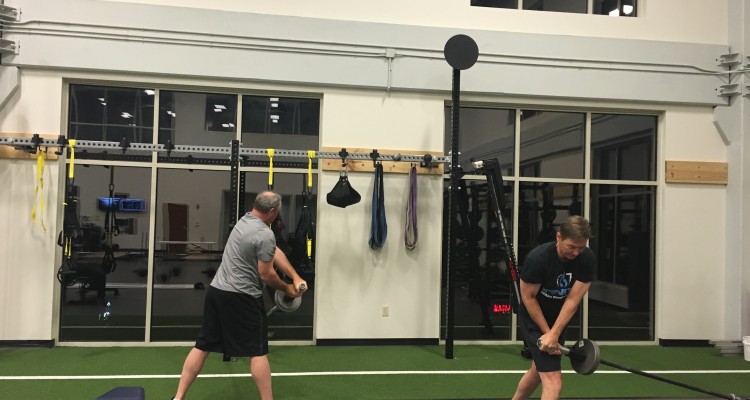For those who regularly strength train, seeing the weight on the bar increase each week can be a great motivator. Most people in the gym measure their progress solely through increases in weight. While weight increases provide an easy indicator of progress, using this as your only measure can invite injury, stifle motivation, and lead to stagnation with any workout program.
At SPARC, we train movement first. It is safer and more productive to lift less weight with better form than to jerk and squirm your way under heavy loads. To teach this principle, we suggest following the rules of double progression and “leaving two in the tank.”
Double Progression:
Instead of setting a static repetition goal, like 3 sets of 10, give yourself a rep range based on the physiological change you desire. For instance, to gain maximal strength, you want to perform about 3-5 reps with heavier loads. For hypertrophy, you would perform about 8-12 repetitions with moderate loads.
Your goal with every exercise should be to hit any number within the rep range with perfect form. Do not go up in weight until you can master the repetitions with the lighter weight. This gives you another variable to assess when measuring progress.
On week one, you might be able to perform 3 sets of 8 with perfect form. Next week, try to do 9 or 10 reps at the same weight for at least one of the sets. If you performed more reps at the same weight, you have progressed! Once you can perform each set at the top of the rep range, it is time to go up in weight.
Leave 2 in The Tank:
The more fatigue accumulates throughout a workout, the more dangerous an exercise can be. As form fails, injuries rise. To stay safe and keep progress steady, we suggest stopping a set with 2 reps left “in the tank.” In other words, perform 8 reps when you feel like you could do 10, and perform 10 reps when you feel like you could do 12. Preserving energy for the next set, exercise, or training session is a great way to focus on your movement quality and prevent injuries.

